8 Must-Have Plants To Increase Oxygen Level in the House
Who doesn’t like fresh clean air and the tranquility plants bring to your indoor space? In one way or another, it has a positive effect on your mental health, immunity, and energy level. And you know what; these plants will increase the aesthetic appeal of your space too!
And it does not stop there. Plants can help to boost oxygen levels in indoor spaces and soak up all the impurities from our surroundings. It is good for both your body and mind because it helps your immune system and gives you more energy. However, the question of how to choose the finest indoor plant that provides the most oxygen while requiring the least amount of care remains unclear. One tip to select the perfect plant is to check the surface area of the leaf. The bigger the surface area of the leaf, the more stomata will be present to release pure air.
We have compiled a list of the indoor plants that emit the maximum percentage of Oxygen. Read below to get an extensive review of these oxygen-producing houseplants.
1. Chinese Evergreen
Chinese evergreen is one of the favorite indoor plants because of its “easy to take care” property. A very flexible and tolerant plant, make sure that you give it a warm and somewhat humid environment. It can thrive well in medium to low sunlight. These plant species are native to tropical and subtropical areas of Asia. The statement leaves of this plant can grow up to the size of 2 feet long. In fact, the plant itself reaches up to the height of 2-3 feet high. With such great air purifiers, Chinese evergreen cleans out formaldehyde and benzene from your indoor space. They are specifically great at releasing oxygen at night time.
Do you want to de-stress and relax? Read our guide on essential oil warmers to add peace and elegance to your home.
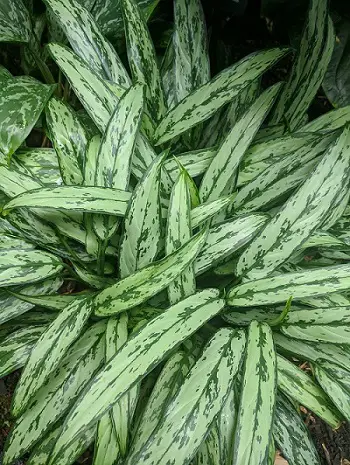
2. Gerbera Daisy
Gerbera daisy is inarguably one of the prettiest flowering indoor plants. As stunning as the flowers are, the ability of this plant to clean the air is commendable. It removes harmful toxins from the air, especially at night. Just make sure that you keep them in a window where they get ample sunlight. This plant blooms very cheerful, daisy-like flowers that make them the eye candy of the room where they are placed in. At times, you could question if they’re real or not because they’re so beautiful. Water it deeply whenever you feel that the top layer of the soil has dried up. Use a self-draining pot for planting them. The leaves and the crown of the plant can easily rot if the water stays on them for long. So make sure that you water the soil carefully.
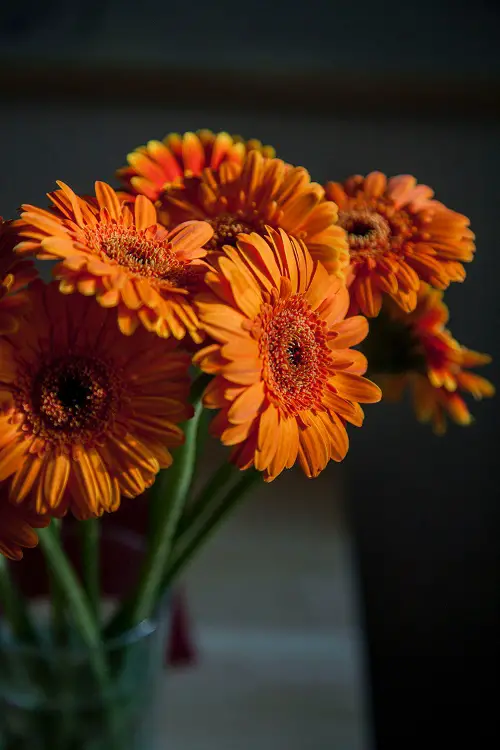
3. Snake Plant
Snake plant belongs to the succulent species. It is commonly known as the mother-in-law’s tongue. This plant has sword-like leaves with unique yellow borders. The best part about this plant is that it is known to absorb cancer-causing chemicals from its surroundings.
Snake plant requires little care as it can survive on minimum sunlight exposure and watering. Direct and indirect sunlight both are good for their growth. During the growing season, an all-purpose food plant is a suitable fertilizer for this plant. They can reach up to the height of 1-4 feet tall.
Caution: These plants are somewhat toxic if ingested. So if you are a pet owner or have small kids at home, make sure that you select a spot to keep the plant that is out of reach for them.
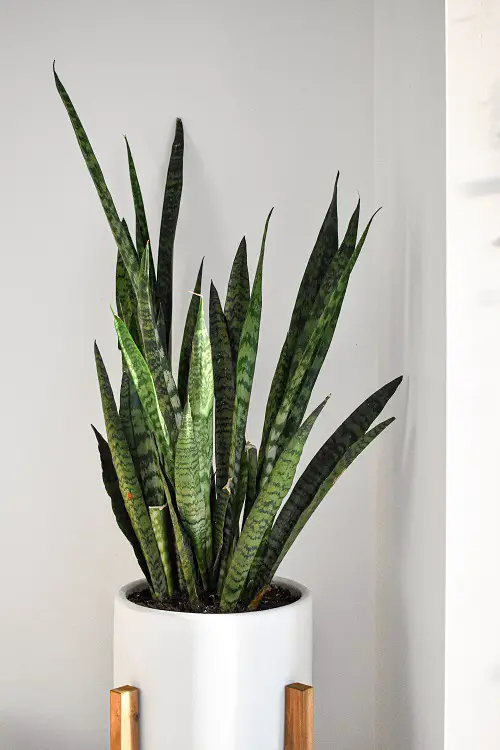
4. Areca Palm
One of the best plants to cleanse the air of your home, Areca palm gives you lush green tropical foliage. Areca is considered a natural cooler that absorbs xylene and toluene from the surroundings and releases oxygen and moisture in the air. Areca palm is also known as golden palm and sometimes as butterfly palm. This palm will be your companion that will always distress you as it relaxes the brain and helps you escape anxiety. What’s even better is that it is completely non-toxic and will be suitable for you if you are a pet owner. If you have skin that is sensitive to dry air or have breathing issues like asthma, then this palm will help you as it is a natural humidifier.
Pro-Tip: This plant requires special attention. Make sure you regularly prune the palm to keep the foliage under control and tame.
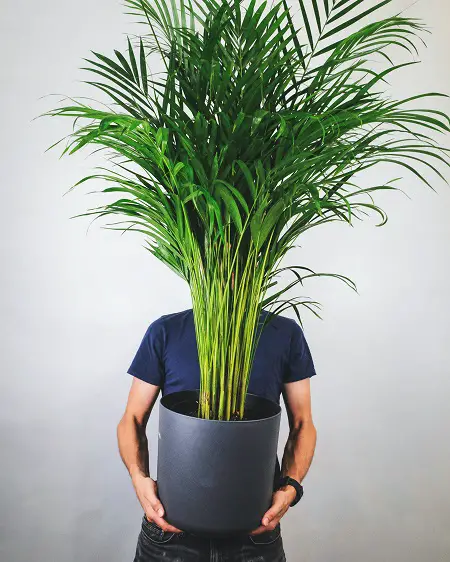
5. Aloe Vera Plant
A popular succulent that grows in semi-tropical and tropical climatic conditions, Aloe Vera has an amazing line of uses in our daily life. Aloe Vera tops the list of the plants that clean the air the most since it is an excellent air purifier that releases a hefty amount of oxygen at night and at the same time absorbs carbon dioxide. It also has great medicinal and nutritional values. Aloe Vera is phenomenally rich in antioxidants that are good for fighting free radicals. And its juice is also a good source of vitamin C. It has a slow growth rate in the dormancy period and can be easily propagated through the leaf-cutting method. Make sure that you plant it in a free-draining pot as overwatering can result in root rot. It is an easy maintenance plant that does not need direct sunlight. It thrives best on low water. Aloe Vera increases the prolonged existence of your life due to its ability to release oxygen at night.
Succulents are your thing, but you’re not sure where to start? Here’s a handy guide on how to propagate succulents from leaves and cuttings.
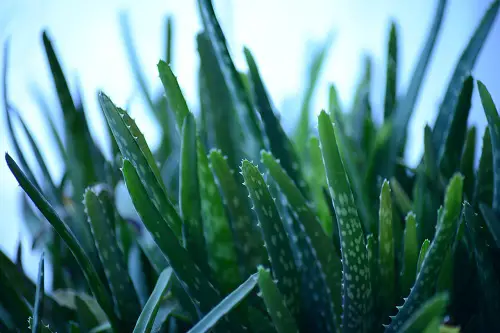
6. Pothos Plant
Pothos is a trailing vine plant that is extremely easy to maintain. It is very fast-growing and increases oxygen levels in your house. These plants have the ability to absorb formaldehyde from the air. They will survive in low-light areas. In fact, bright light can be damaging to their leaves. Pothos will look great in baskets and even old wine bottles. These plants need a mild fertilizer to flourish during the growing season. Golden Pothos, Neon Pothos, and Jade Pothos are a few of the varieties that need to be kept in mind while selecting one for your home.
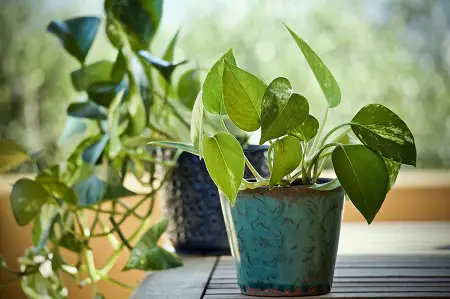
7. Bamboo Plant
Lucky bamboo makes a perfect oxygen-producing indoor plant because of its resilient nature, even though it has an extensive stem system. This plant could be one of your cleverest picks for indoor shopping. The bamboo plant is a natural humidifier and it moistens the air while cleaning it as well. It absorbs quantities of formaldehyde and benzene from the surroundings.
The bamboo plant comes in braided and twisted stems also. Keep this intriguing plant in a well-lit room but avoid direct sunlight. You don’t necessarily have to plant them in soil. Keep them in cylindrical statement vases in your foyer to make them a focal point of your home entrance. This is a toxic plant for animals so we suggest keeping it out of their range. Give them moderate and humid temperatures to flourish. A moderately fast-growing plant, it can reach up to the height of 3 feet.
Did You Know? Lucky bamboo is sensitive to chlorine and other chemicals so avoid using tap water for them.
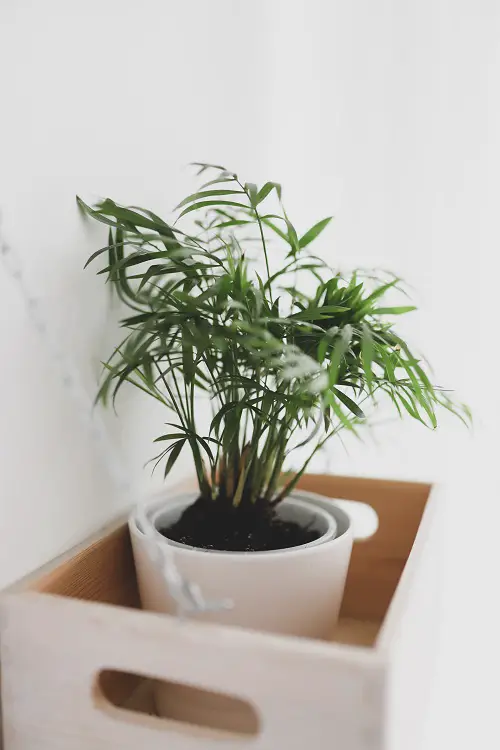
8. The Weeping Fig
Weeping figs can be easily found in your nearby market. It is also known as Ficus. Recognized by NASA, this is known to be one of the most efficient plants for purifying the surrounding air. The weeping fig can reach up to the height of 60 feet and they thrive in tropical climates. It should be regularly watered during the growing season. These plants love bright, indirect sunlight. Root rot will be a problem if you overwater it. Keep a moderate humidity level for the plant to thrive well. This is a fast-growing plant that can grow up to a foot in a year’s time.
The weeping fig is mildly toxic to pets and humans so exercise necessary caution. The milky sap in the stems and leaves can cause gastro issues. It may also cause mild infection on the skin as well.
Pro-Tip: Watch out for pruning and repotting because of its fast growth.
Make a statement with these tips on the trendy style of candle holder for your home.
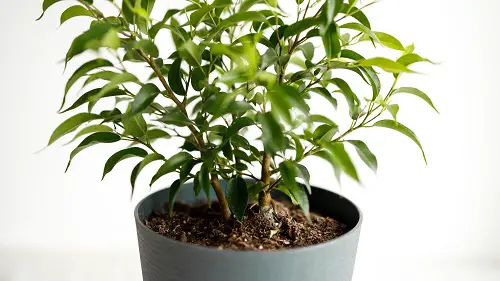
Which Plant is Good for the Bedroom?
The ability to improve the air quality motivates us to keep plants in our bedrooms. Dry indoor air, which keeps on circulating indoors, can be a cause of various allergies and infections. So why not keep a natural air purifier in the form of a plant that will not only clean the air but can also make your bedroom look serene.
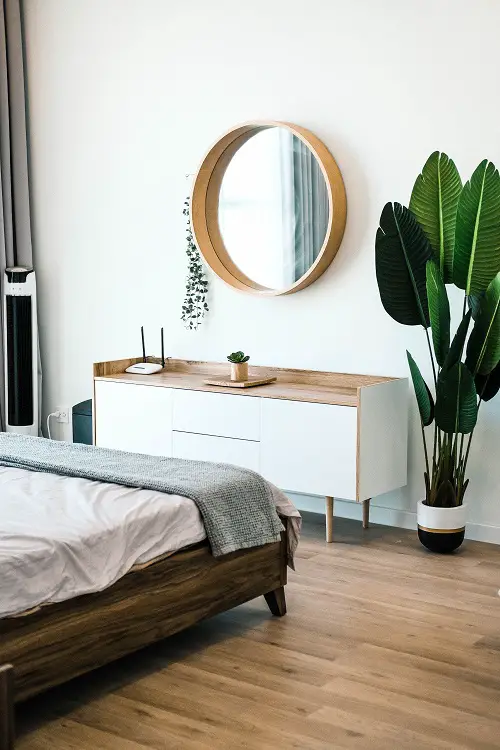
Night sleep is the best time when your body rejuvenates and some plants, like snake plants, purify the air at night. So when you sleep, the air you breathe in is continuously cleaned up. Some of the plants have the ability to help your brain fight against anxiety while giving you peaceful sleep. And when you have a plant at your bedside, imagine the number of toxins being removed from your body!
Here is a list of a few plants that will be best for keeping in your bedroom.
i. Snake plant
ii. Golden Pothos
iii. Spider plant
iv. Gardenia
Which Plant is Good for the Living Area?

Selecting a plant for your living room can be tricky. You have to keep in mind that the size of the plant you select will depend on the size of your living room space. Also, how much sunlight the selected plant will be exposed to is of great importance as this will help the plant to flourish. So if you are wondering which ones you should choose for your living room, here is a list of plants that can be added for tranquility and style!
i. Peace lily
ii. Fiddle leaf fig
iii. Norfolk Island Pine
iv. Corn plant
v. Banana plant
Get your indoor space lucky and place the plants to give you a purer and better quality of life!


